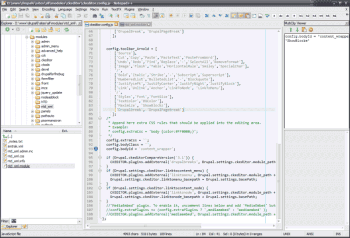Using Notepad++ for Web Development
Configuring the Notepad++ text editor my way
Published on February 02, 2010I like real IDEs for console and application programming, but for web development I’ve always felt most comfortable using a text editor. Notepad++ is my editor of choice because it is fast and feature rich.
Editor Settings
Go to Settings -> Preferences to change the default settings for NP++.
I turn on Multi-Editing Settings, which allows you to make multiple selections and edit them at the same time. Basically, this gives you multiple cursors that output the same text. I switch the Folder Margin Style to Circle tree, just as a preference. I also turn on the vertical edge, setting it to Line mode at 80 columns. There are plenty of other things to switch around if you just poke around in there. Next, I go to Settings -> Style Configurator and change my global font settings.
Useful Plugins
The default interface of NP++ is perfectly fine for web development, but with a few changes, it becomes much more powerful. One of the best things you can do is enable the Explorer plugin. Plugins can be added by going to the Plugins dropdown menu and using the Plugin Manager. Several plugins come installed by default. I typically add to the defaults: Compare, Explorer, MultiClipboard, Subversion, WebEdit, and XML Tools. Here are some tips regarding plugins:
- Enable the Explorer and MultiClipboard plugins in their respective menus in the Plugins menu. Check the settings for these plugins to see what they can do.
- If you use Subversion, the Compare plugin can do quick checks against the base. Or, with any of the Tortoise versioning tools and the Explorer plugin, you never need to leave NP++ to do your version control.
- Turn on the Console Dialog if you need to do anything from the command line.
It even has special variables you can use (type ‘help’). If you type
cmdfrom the console, you get a standard DOS prompt. - WebEdit gives you buttons that turn NP++ to a web editor with code wrapping. Use it by highlighting some text and clicking a button. The text will automatically be wrapped in tags. Read the instructions in Notepad++pluginsdocWebEditWebEdit.txt to learn how to add more.
Keyboard Shortcuts
There are a few gems I’ve really come to love: Ctrl-D to duplicate a line and Ctrl-(Shift)-U to toggle case. I also add Ctrl-; as short date format (I always liked that combination from Excel). The TextFX shortcuts are good things to map. You can add keyboard shortcuts through Settings -> Shortcut Mapper.
